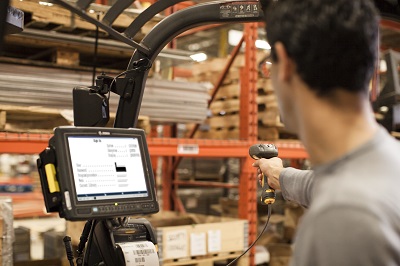The approaching Windows end-of-life deadlines could signal disruptions in those businesses that have postponed the decision to migrate to a new mobile operating system.
On June 10, Windows Embedded CE 6.0 will no longer be supported, followed by Windows Embedded 8.1 Handheld on June 9, 2019 and Windows Embedded Handheld 6.5 on January 14, 2020. Marco Nielsen, vice president of managed mobility services at Stratix, says there is still time for last-minute, business-critical steps to ensure business continuity and minimize cost of the transition to a new operating system.
“The majority of customers have seen the light, and are making progress and thinking proactively,” he said. “Larger customers have the focus but need the budget. Smaller operations might think if it’s not broken don’t fix it, but if they’re not proactive and a device fails, sooner or later they could get stuck in a difficult place. Maybe not this year or even the next, but down the road they will have issues.”
With Windows no longer a viable option for many enterprises, Android has emerged as the top contender for an operating system compatible with the rugged environment. According to a VDC Research report, Android OS share grew from 24% to 37% of all rugged handheld devices from 2015 to 2016, while Windows Embedded Handheld 6.5X/Windows Mobile fell from 49% to 39% during that time.
Android hardware manufacturers are adding capabilities designed to support Android on rugged devices in the enterprise. These include custom security APIs, hardware integration APIs and more robust mobile device management features.
“Windows has been around a long time on mobile devices, but they really lost their focus along the way,” Nielsen said. “The marketplace still has some customers out there with lingering Windows devices. It’s dwindling, and there’s also a renewed focus on what the devices are being used for. Some issues are security-based, and security aspects are growing every year. The Spectre and Meltdown vulnerabilities were pretty significant, depending on what OS you’re running. There aren’t many workarounds left for older devices, and who knows when the next vulnerability might show up.”
To avoid “trying to boil the ocean” or adversely impacting business, Nielsen offered tips for a proactive strategy. Firstly, it’s important to make sure both production and IT folks are aware if their devices are facing end of life, since it can be turned into an opportunity to unlock other possibilities such as an upgrade to wireless infrastructure.
The generic IT steps—prototype, pilot, production, train – are not always thought of in the warehouse environment, Nielsen cautioned.
“You should think about warehouse mobile devices the same as a desktop in an office,” he said. “They are important to your business, but sometimes different teams manage these devices. You have to move up in the organization’s food chain and make sure you have a budget and involve everyone. It takes some time and effort to achieve that.”
Another layer that further complicates the issue is device management. It is possible the corporate IT department already uses a device management solution, so warehouse and production stakeholders don’t have to reinvent the wheel, Nielsen said.
“Some organizations create apps for the back office or field folks, but they forget about the warehouse when they could put it all under the same umbrella,” he said. “If software and applications change, how will you be dynamic enough as a business to incorporate those changes?” Nielsen said. “How do you get from the dinosaurs to the fast lane? The whole company must work together.”
Article topics








